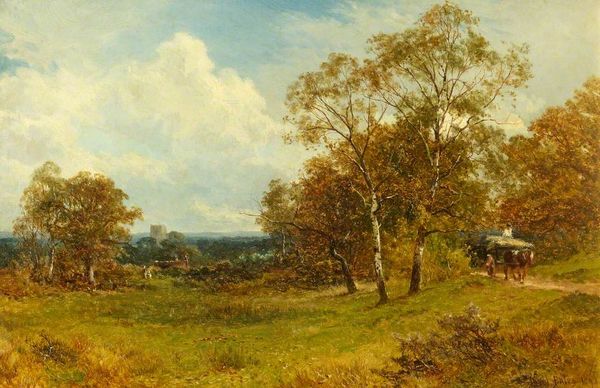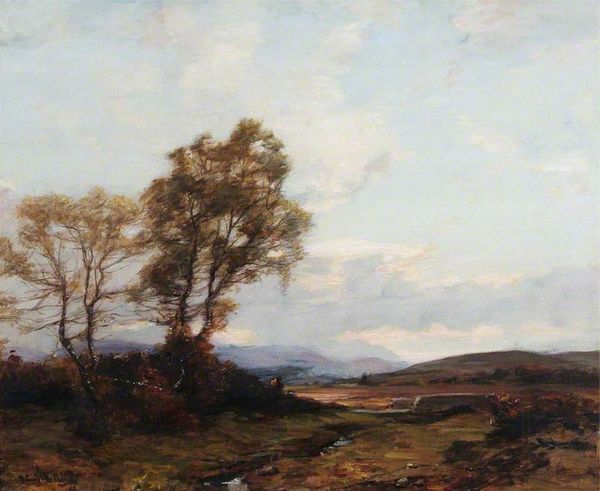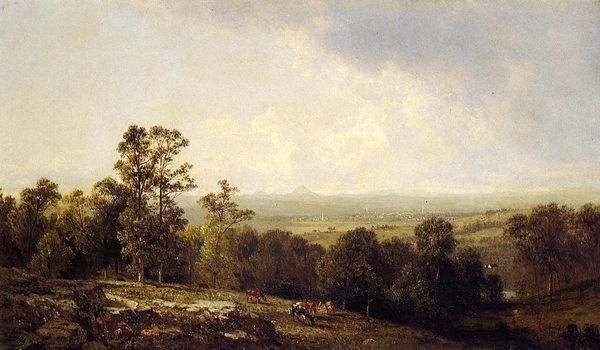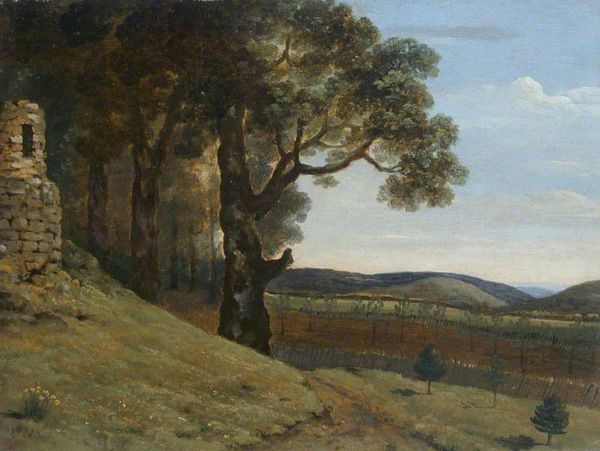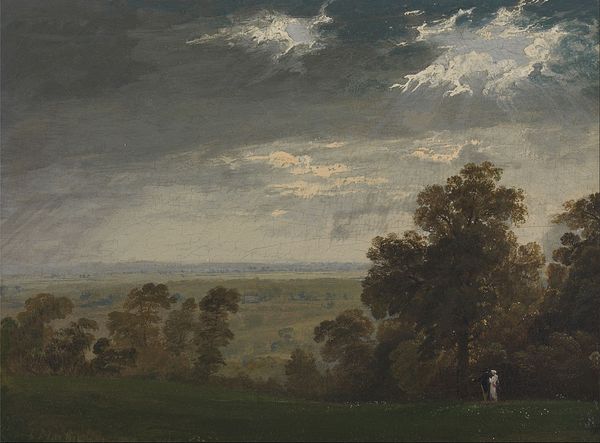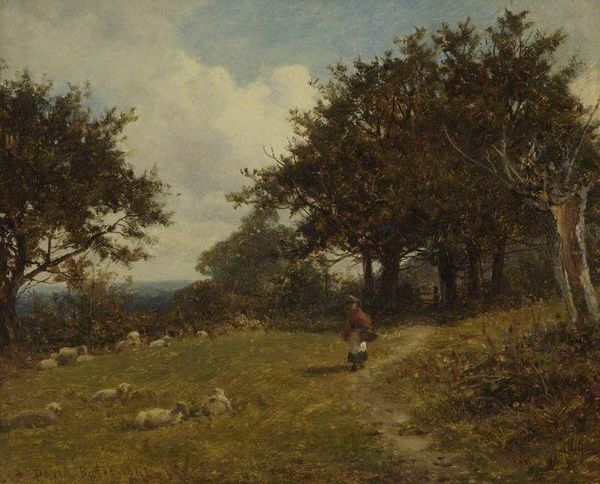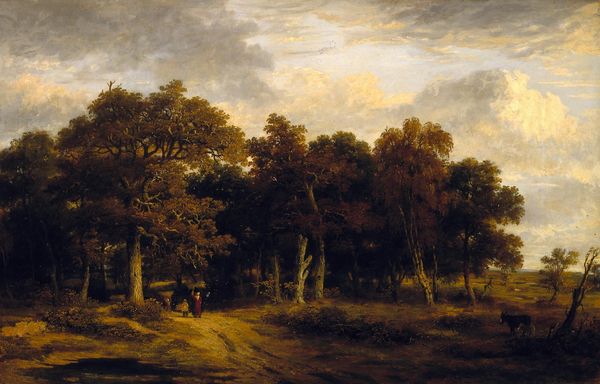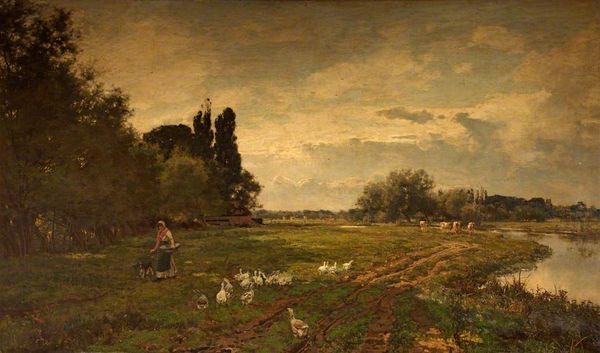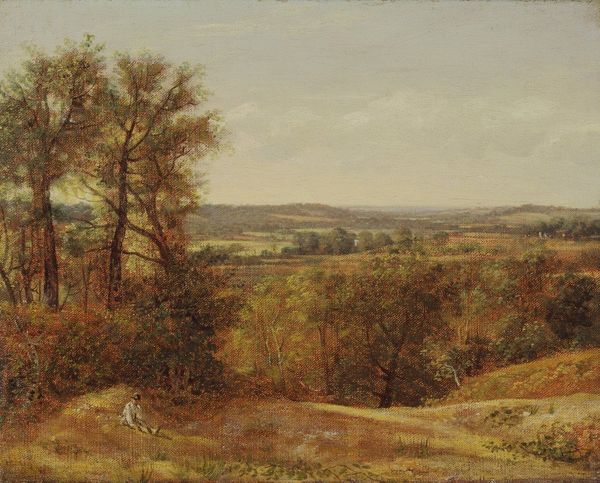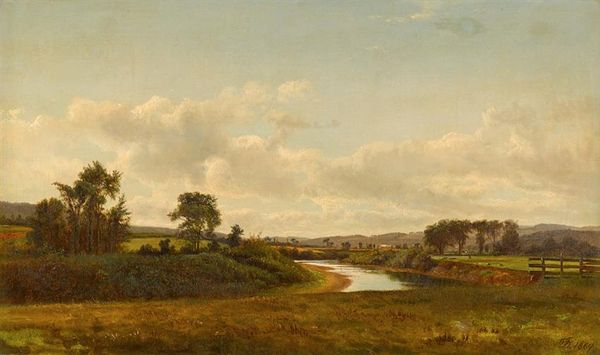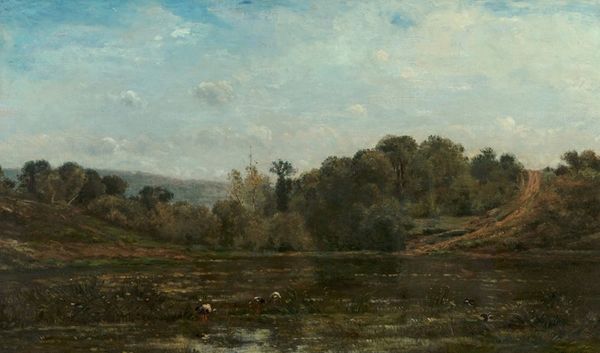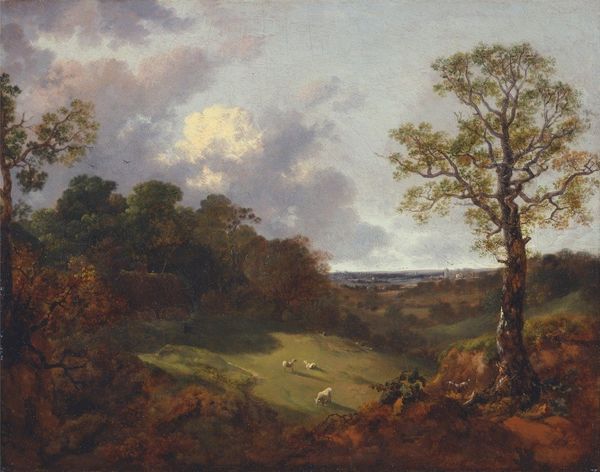
Copyright: Public domain
Editor: This is Alfred Parsons' "The Manor Park," painted around 1900, using oil on canvas. There's a stillness in the air, a hushed feeling almost, emphasized by the muted tones. How would you interpret this work, looking at it through a historical lens? Curator: Well, considering Parsons' background as primarily an illustrator and garden designer, and situating this work within late Victorian England, several layers become apparent. Look at how the manicured landscape meets a more ‘natural’ wooded area. Does this painting reinforce or perhaps question the prevailing ideologies around land ownership and class? Editor: I see what you mean. The manor in the distance, partially obscured, seems to hold power, while the figures in the foreground, seemingly commoners, are kept separate by that fence. Do you think this separation was intentional? Curator: Undoubtedly. Artists during this period often received commissions from the wealthy elite. Parsons, whether consciously or not, would have been operating within that structure. Think about whose gaze is being privileged here: the landowner, perhaps surveying their domain. But look closer at those figures – what stories might they tell of access to land, or the lack thereof? The ‘Plein-air’ execution reinforces the role and perception of painting at the time. Editor: So it's not just a pretty landscape. It's embedded within the social hierarchies of its time. I guess landscape paintings can reflect social and political dynamics, it's like reading between the lines. Curator: Precisely. We’re not just observing a scene; we’re examining a constructed image, shaped by cultural forces. The challenge is always to unpack those forces and understand the artist’s position within them, considering factors of access and restrictions as potential driving factors for their oeuvre. Editor: That’s given me a lot to think about, seeing how art plays a public role! Curator: It’s all about looking beyond the surface. Art reflects the society it comes from, it makes you wonder, what will people say of art nowadays a century from now.
Comments
No comments
Be the first to comment and join the conversation on the ultimate creative platform.
